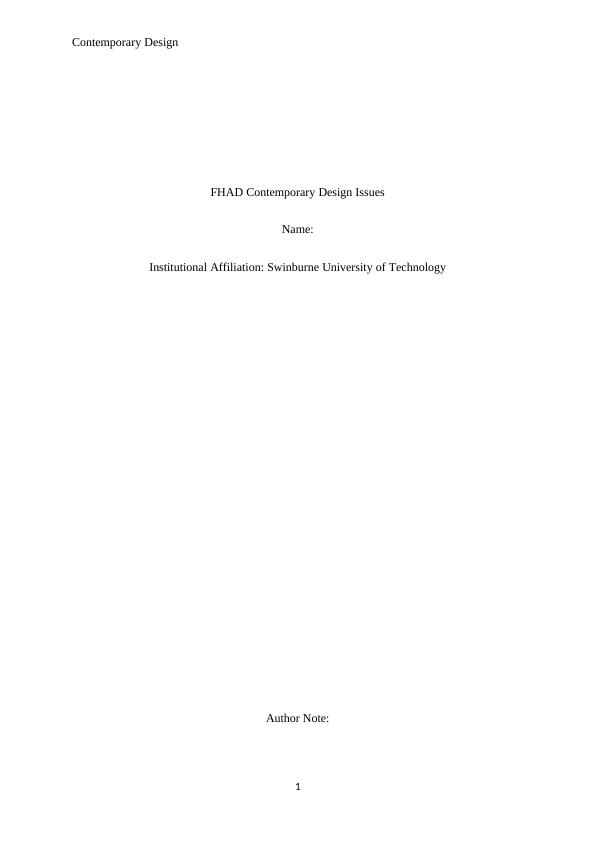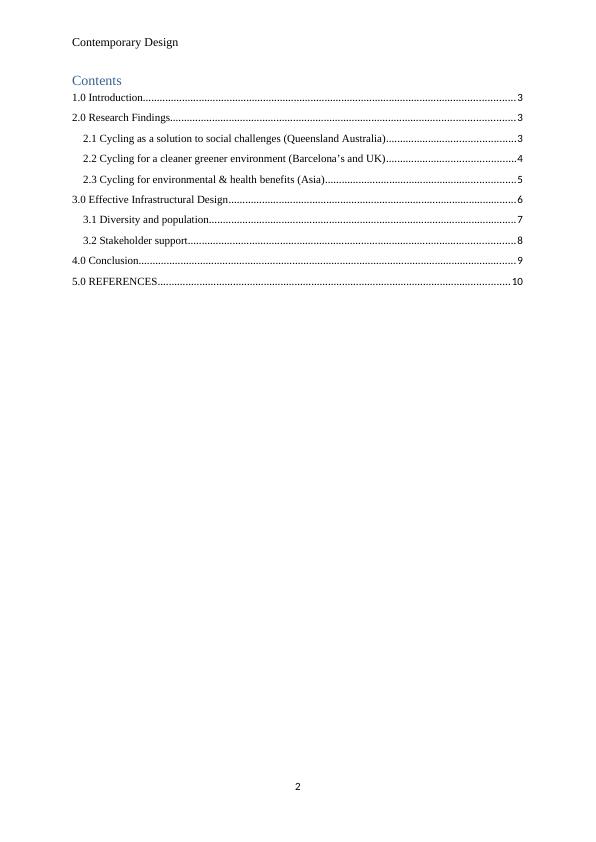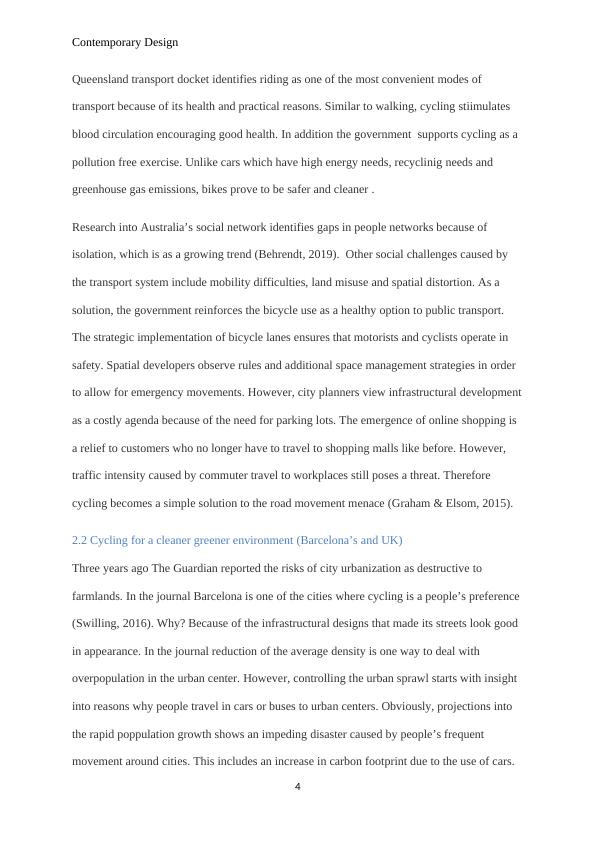Contemporary Design: Cycling as a Solution to Social and Environmental Challenges
13 Pages2685 Words317 Views
Added on 2023-03-30
About This Document
This paper explores the role of cycling in addressing social and environmental challenges in contemporary cities. It discusses the benefits of cycling, such as social inclusion, public ownership of space, and health and environmental benefits. The paper also examines effective infrastructural design for cycling and the importance of stakeholder support.
Contemporary Design: Cycling as a Solution to Social and Environmental Challenges
Added on 2023-03-30
ShareRelated Documents
End of preview
Want to access all the pages? Upload your documents or become a member.
Electric Cycles and Scooters
|21
|4036
|24
Cycling and Sustainability PDF
|16
|5919
|438
Influence of Bike Lane Types on Perceived Comfort and Safety of Bicyclists and Potential Bicyclists Research 2022
|13
|3333
|24
Making City Centre Car Free: Economic, Environmental and Social Perspective
|11
|3237
|499
Car Free City: Health, Economic, Environmental and Social Impacts
|14
|4615
|58
Wind-Powered Vehicle Project: Design, Construction, and Significance
|12
|1525
|460




